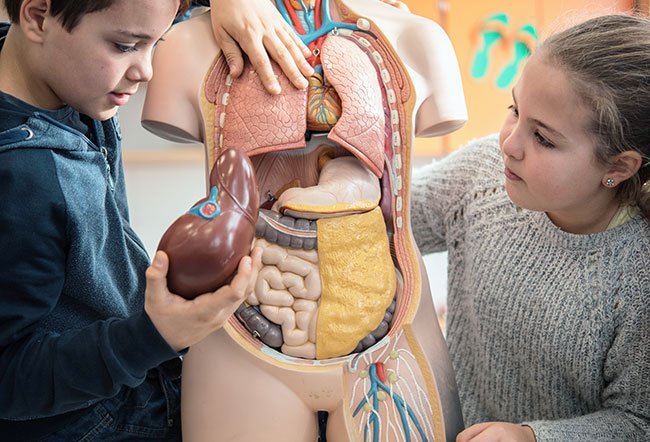How Many Cells Are in the Average Human Body?

Recent estimates put the number of cells in the average human body at about 37.2 trillion, although scientists are still debating the exact number.
- Erythrocytes or red blood cells make up the vast majority, at an estimated 2.63 trillion.
- Glial cells from the nervous system are the second largest class, with an estimated 0.30 trillion cells.
- Endothelial cells (vessels), dermal fibroblasts (skin), and platelets (blood) make up the remaining 0.58 trillion cells.
The discovery of cells is one of science's most remarkable achievements, aiding in a better understanding of life processes.
What is a cell?
Cells are the fundamental building blocks of all living things. Each type of cell serves a unique function, providing structure to the body, absorbing nutrients from food, and performing critical functions.
Cells combine to form tissues, which combine to form organs, such as the heart and brain.
Cells contain a variety of organelles, which perform functions for the cell such as protein synthesis, chemical processing, and energy generation. The nucleus contains the genome and is located in the center of the cell that serves as the cell's "control room."
Normal cells have specific characteristics that allow them to keep tissues, organs, and organ systems functioning properly:
- Control their growth through external signals, which means they only grow and divide when necessary.
- Die as a result of programmed cell death (apoptosis) during normal development to maintain tissue homeostasis and in response to irreparable damage.
- Stick together by forming selective adhesions. They are programmed to stay in their intended location.
- Typically differentiate into specialized cells with specific functions. This allows them to adopt different physical characteristics despite sharing the same genome.
What is the basic structure of a cell?
Cells are the smallest living thing in the human organism. Different types of cells vary in shape (e.g. round, flat, long and thin, short and thick), size (e.g. granule cells of the cerebellum in the brain are 4 μm, whereas massive oocytes or eggs produced in the female reproductive organs are 100 μm) and function. All cells, however, have three major components:
Cell membrane
Every cell in the body is surrounded by a cell membrane (plasma). The cell membrane separates the material outside the cell, called extracellular material, from the material inside the cell, called intracellular material.
A cell membrane is made up of two layers of phospholipid molecules. It protects the cell's integrity and regulates the passage of materials in and out of the cell. All materials within a cell must have access to the cell membrane to exchange information.
Proteins in the cell membrane provide structural support, form channels for material passage, act as receptor sites, and serve as carrier molecules and identification markers.
Nucleus
The nucleus, which is formed by a nuclear membrane encircling a fluid called nucleoplasm, is the cell's control center. Deoxyribonucleic acid (DNA), the cell's genetic material, is found in chromatin threads in the nucleus. The nucleolus is a dense region of ribonucleic acid (RNA) where ribosomes are formed.
The nucleus determines how a cell will function according to its basic structure.
Cytoplasm
The cytoplasm is the gel-like fluid that fills the interior of the cell. It serves as a medium for chemical reactions and as a platform for other organelles to function within the cell. The cytoplasm is where all of the functions for cell expansion, growth, and replication take place.
Materials move within the cytoplasm via diffusion, a physical process where things can only travel short distances.
Cytoplasmic organelles are small organelles that are suspended in the cell's cytoplasm. Each type of organelle has a distinct structure and a role in the cell's function.

